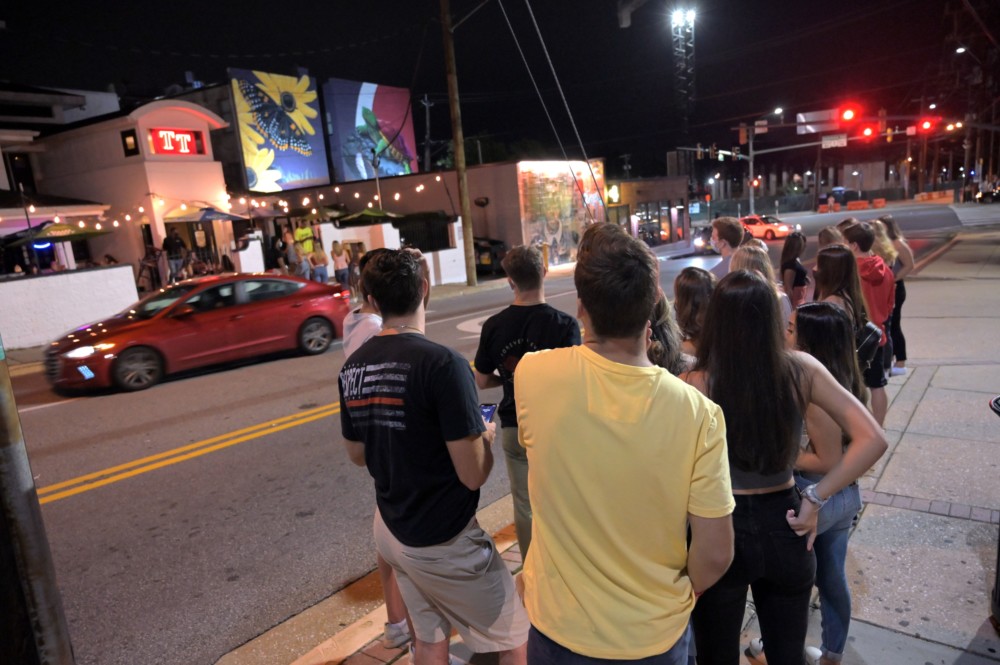By Heidi Stevens
Chicago Tribune
WWR Article Summary (tl;dr) Earlier this summer, leading Brain researcher Laurence Steinberg predicted that things would not go well for college students returning to campus in the fall.
Chicago
Back in June, leading adolescent brain researcher Laurence Steinberg wrote a New York Times op-ed predicting that students returning to college campuses during a pandemic would not go well.
“These plans are so unrealistically optimistic that they border on delusional and could lead to outbreaks of COVID-19 among students, faculty and staff,” wrote Steinberg, who is a professor of psychology at Temple University and the author of “Age of Opportunity: Lessons From the New Science of Adolescence.”
He was right, of course. A late September survey conducted by the New York Times looked at more than 1,600 American colleges and universities and found at least 130,000 cases and 70 deaths since the pandemic began.
Most of those cases, the survey found, were announced since students returned to campus this fall.
So now what?
When answering that question, Steinberg would like us to consider not just the science around viruses, but the science around young people’s brains.
“Most types of risky behavior, reckless driving, criminal activity, fighting, unsafe sex and binge drinking, to name just a few, peak during the late teens and early 20s,” he wrote in June. “Moreover, interventions designed to diminish risk-taking in this age group, such as attempts to squelch binge drinking on campus, have an underwhelming track record. There is little reason to think that the approaches proposed to mitigate transmission of the coronavirus among college students will fare any better.”
On Oct. 13, Steinberg is leading a free, online event called “College during COVID: Lessons from the science of adolescence.” It’s hosted by the nonprofit Family Action Network, and I’ll be moderating the Q&A portion.
We’ll talk about how we got here, and where we should go next, as students, parents and educators grapple with what college should look like in the winter and spring.
“I think the big unknown is what happens to the spread of the virus once we get into colder weather and people are spending more time indoors,” Steinberg told me Monday. “Each teen is different, and there is no best way to do this. We are in uncharted territory.”
Steinberg and his colleagues recently studied the risk-taking behaviors of more than 5,000 people between the ages of 10 and 30 from 11 different countries. In nearly every country, they found risk-taking picks up in the late teens and peaks somewhere between ages 20 and 24.
“It’s hard to think of an age during which risky behavior is more common and harder to deter than between 18 and 24,” Steinberg wrote in June, “and people in this age group make up about three-fourths of full-time American undergraduates.”
It’s the age range, Steinberg’s research has found, during which people are most responsive to the potential reward of a risky choice, relative to its potential cost.
People in the 18- to 24-year-old age range have a harder time exercising self-control, especially when they’re “emotionally aroused”, than they do in their late 20s and older, he found. And, it’s an age range when the company of peers increases activity in the brain’s reward regions and increases a person’s willingness to take risks.
In June, Steinberg wrote the following:
“My pessimistic prediction is that the college and university reopening strategies under consideration will work for a few weeks before their effectiveness fizzles out. By then, many students will have become cavalier about wearing masks and sanitizing their hands. They will ignore social distancing guidelines when they want to hug old friends they run into on the way to class. They will venture out and begin partying in their hallways with classmates from other clusters, and soon after, with those who live on other floors, in other dorms, or off campus. They will get drunk and hang out and hook up with people they don’t know well. And infections on campus, not only among students, but among the adults who come into contact with them, will begin to increase.”
On Monday, he said this:
“It seems to me that the main lesson learned is that many adolescents are responsible, but that a large number are not. And it is their behavior outside of class that we should be worried about.”
But was it reasonable, or fair, to expect otherwise?
“Let’s keep in mind that the age group we are worried about is not considered mature enough to handle alcohol,” Steinberg said Monday. (The cohort that’s under 21, anyway.) “Why would we think that they are mature enough to handle social distancing in a safe and consistent way?”
He says this not with disdain for young people, but with urgency for the adults setting up the protocols and expectations for them.
I asked him if he thinks parents and educators owe college students a little empathy and grace right now.
“Absolutely,” he said.
“Not only empathy and grace,” he added. “But the acknowledgement that steps need to be taken by adults to protect kids from themselves.”
Should be a fascinating discussion next week.
___
Larry Steinberg’s discussion, “College During COVID: Lessons from the Science of Adolescence,” takes place from 7-8 p.m. Oct. 13. Registration is required at bit.ly/SteinbergFANWebinar.
More information at familyactionnetwork.net.
Join the Heidi Stevens Balancing Act Facebook group, where she continues the conversation around her columns and hosts occasional live chats.
___
Distributed by Tribune Content Agency, LLC.














































































































































































































































































































































































